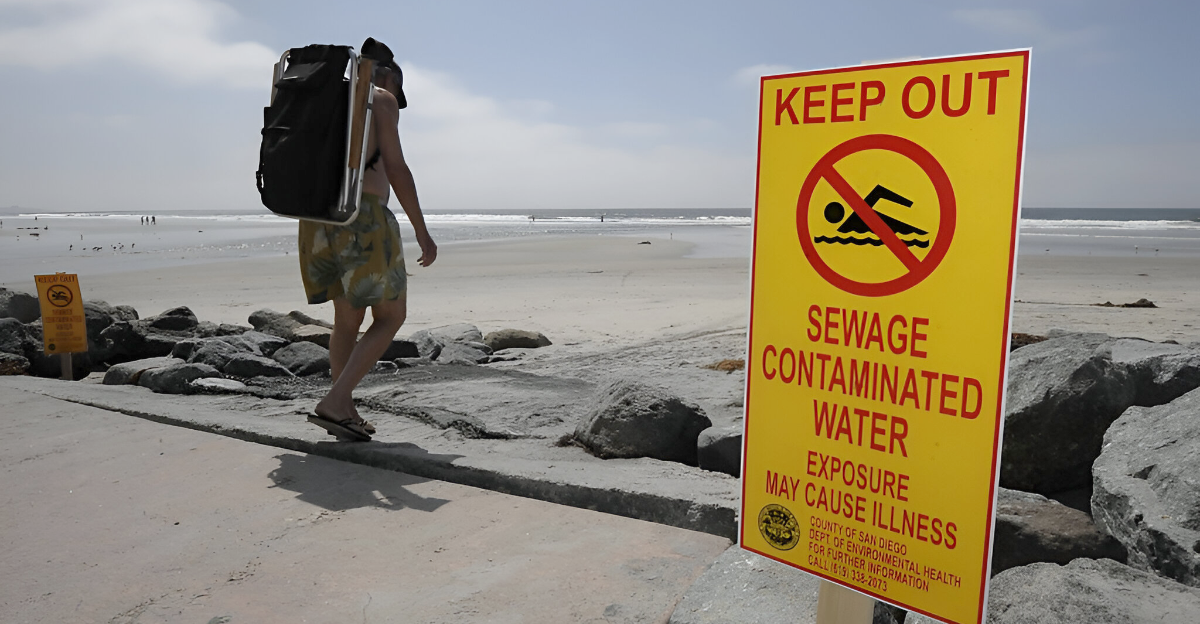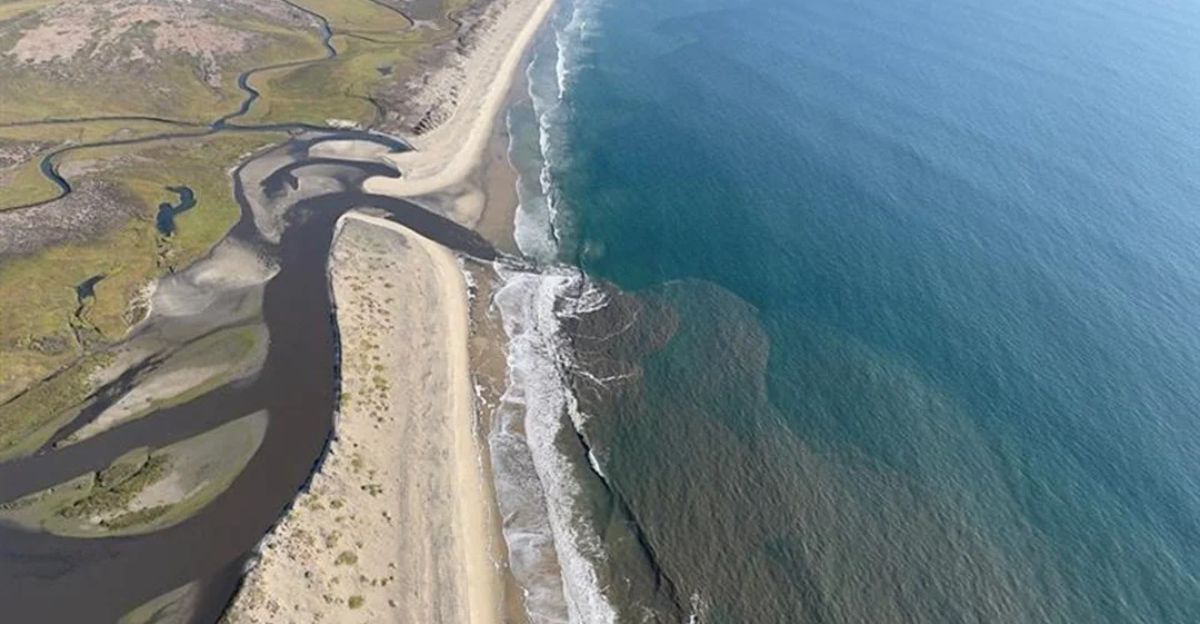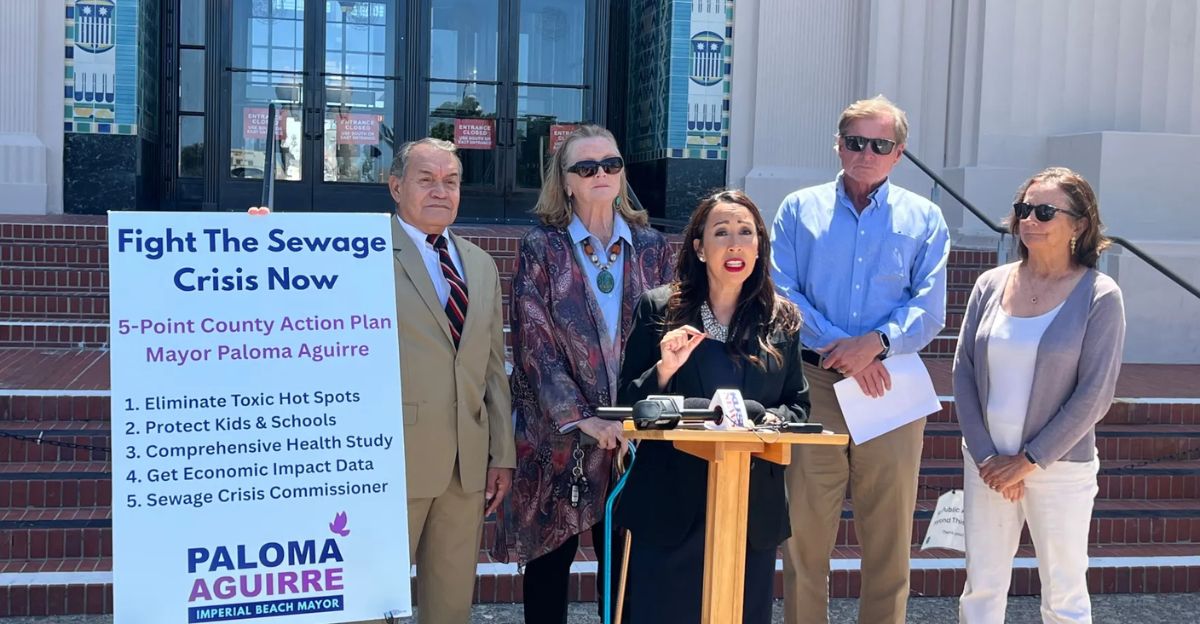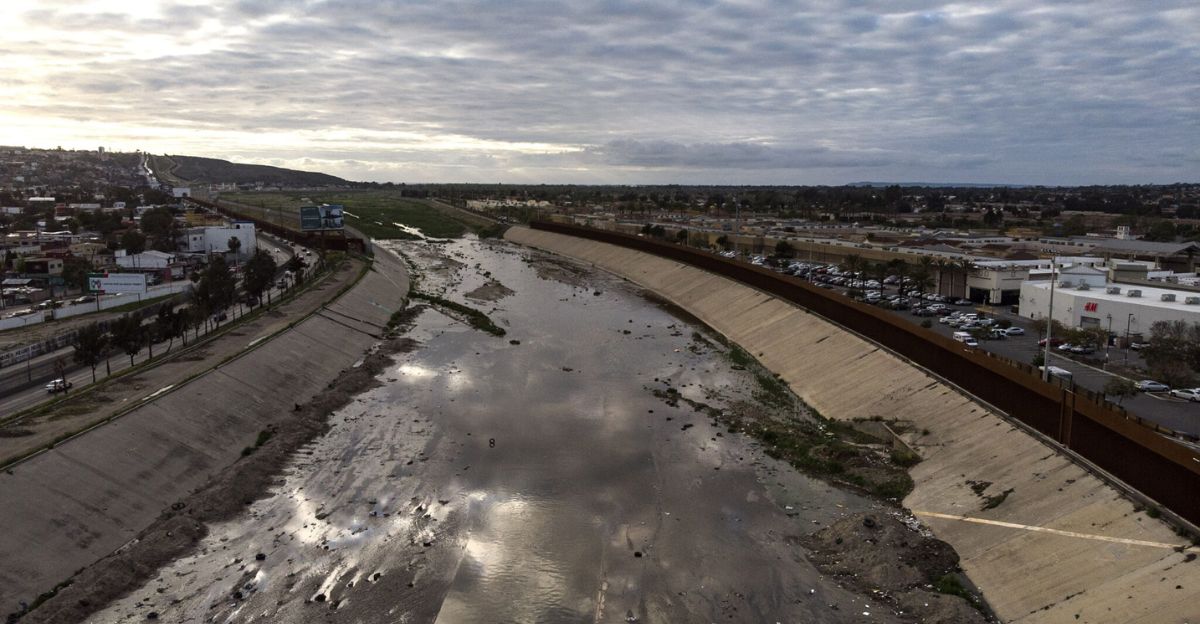
The future of environmental monitoring has begun as NASA’s Earth Mineral Dust Investigation (EMIT) sensor aboard the International Space Station has captured dramatic images of a huge sewage plume spilling from the Tijuana River into the Pacific Ocean off Southern California.
The satellite images, corroborated by ground samples, reveal a visible, sprawling contamination zone near Imperial Beach, making the scale of the crisis undeniable from orbit.
The EMIT sensor, which was initially created to map minerals, is now used as a powerful tool for tracking water pollution and allows scientists to pinpoint the extent and movement of toxic wastewater in real time.
Origins of the Crisis: Infrastructure and Population Pressures

The roots of this environmental disaster lie in decades of inadequate wastewater infrastructure on both sides of the U.S.-Mexico border. Rapid population growth in Tijuana has overwhelmed local sewage treatment plants and spurred regular sewage overflows, particularly following heavy rains.
For too long, the management of the South Bay International Wastewater Treatment Plant, designed to prevent sewage from reaching the ocean, has been hamstrung by chronic underfunding, outdated technology, and failures to manage effectively.
Consequently, untreated sewage, industrial waste, and urban runoff have been discharged along the Tijuana River and eventually into the Pacific Ocean.
Scope of the Pollution: Billions of Gallons Over Decades

In the last five years, over 100 billion gallons of raw sewage and polluted runoff have flowed into the estuary and ocean, sometimes at rates greater than hundreds of millions of gallons a day.
The pollution plume, now visible from space, underscores the sheer volume and persistence of the crisis. Swimming advisories have been in place on beaches in Imperial Beach and surrounding communities have been closed for years because of persistently high levels of bacterial contamination, with no clear end in sight.
Waterborne and Airborne Threats

The health consequences for residents and beachgoers are severe and varied. Thousands of cases of gastrointestinal illness, rashes, respiratory infections, and other more serious illnesses have been attributed to exposure to the contaminated water.
Recent studies have shown that not only bacteria and viruses but also toxic chemicals—such as drug metabolites and industrial compounds—are present in both water and air and carried inland by sea spray aerosols. This means that even people who avoid the ocean can be exposed by simply breathing the coastal air.
Chemicals Contaminants: From Drugs to Sunscreens

The sewage plume has also been identified as containing a cocktail of harmful chemicals, namely benzoylecgonine (a cocaine metabolite), methamphetamine, octinoxate (a sunscreen ingredient), as well as dibenzylamine (from tire manufacturing).
Some of these chemicals, such as octinoxate, can break down into even more toxic byproducts when exposed to sunlight and can lead to DNA damage when inhaled or ingested. The presence of such compounds highlights the complexity and danger of the pollution, far beyond traditional concerns about bacteria alone.
Airborne Pollution

Groundbreaking research conducted by Scripps Institution of Oceanography revealed that sea spray aerosols can carry pollutants from sewage-contaminated coastal waters to the atmosphere.
But as waves crash and bubbles burst, bacteria, viruses, and chemical pollutants are also released into the air, only to move back onto land and expose entire communities—not just swimmers and surfers—to an array of health risks. As much as 75% of the bacteria in the air at Imperial Beach can be traced directly to raw sewage in the surf.
Environmental Damage: Ecosystems at Risk

The environmental implications of the sewage crisis are far-reaching. Untreated wastewater introduces excessive nutrients, leading to harmful algal blooms that deplete oxygen and kill marine life.
Toxic chemicals and heavy metals accumulate in the tissues of fish, marine mammals, and birds, disrupting food webs and threatening endangered species in the Tijuana Estuary and beyond. The potential for seafood contamination also poses a risk to human health, especially for those who are dependent on local catches.
Community Response and Calls for Action

Local leader, led by Imperial Beach Mayor Paloma Aguirre, have demanded urgent action, calling for a comprehensive County Sewage Action Plan aimed at infrastructure upgrades, public health protections, and environmental restoration.
Frustration is mounting as beach closures drag on, and residents face daily exposure to pollution with little relief in sight. Community groups and environmental organizations are calling for federal and binational cooperation to address the crisis at its source.
Infrastructure Upgrades: Progress and Challenges

Federal and local officials have announced plans for extensive repairs and upgrades at the South Bay International Wastewater Treatment Plant could increase its treatment capacity from 25 to 50 million gallons per day.
The project, which will cost $600 million, is expected to take five years to complete, with interim relief possible as new facilities come online. However, experts caution that long-term solutions will require sustained investment, cross-border collaboration, and robust management to keep pace with growing demand.
Environmental Justice and The Path Forward

The sewage disaster in Tijuana–San Diego has been described by experts and advocates as one of the worst environmental injustices in the nation. Communities near the border, often with fewer resources and less political clout, bear the brunt of the health and environmental effects.
The visibility of the pollution from space, thanks to NASA’s new tools, has brought renewed urgency and hope that policymakers will finally act to protect public health and restore the coastline. Until then, residents continue to live with what many describe as an “unstoppable stench” and an ongoing threat to their well-being.
Explore more of our trending stories and hit Follow to keep them coming to your feed!

Don’t miss out on more stories like this! Hit the Follow button at the top of this article to stay updated with the latest news. Share your thoughts in the comments—we’d love to hear from you!







